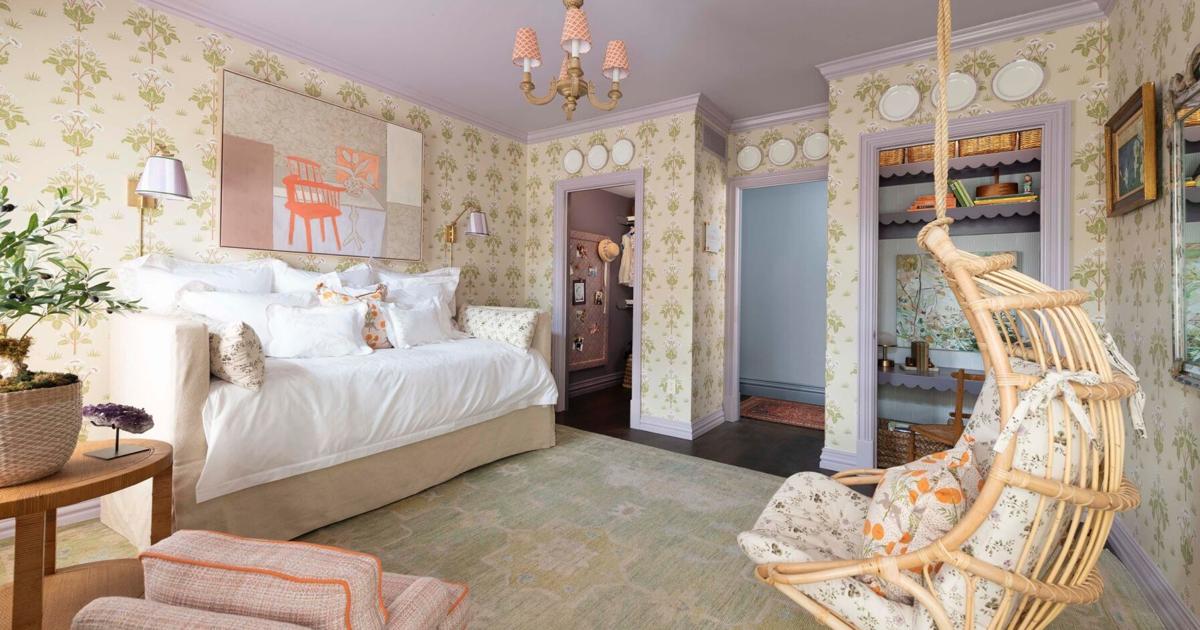For generations, autism and other cognitive disorders have largely been neglected when it comes to interior design, but that’s gradually beginning to change.
“Historically, design has very much been geared around aesthetics and making homes beautiful,” said Jane Dagmi, managing director of High Point by Design, or HPxD, a nonprofit organization working to make High Point a year-round destination for the interior design industry.
“But it’s also important to look at how the home functions for whoever is living there. How does the home feel? You want that feeling to be good, to be harmonious.”
That’s easier said than done, however, when there’s a person with autism living under your roof. Individuals on the autism spectrum may be sensitive to certain colors, certain types of lighting, aggravating sounds — a noisy dishwasher, for example — and/or visual clutter that most people wouldn’t think twice about.
Inspired by this dilemma, Dagmi and HPxD earlier this month hosted Design Forward, a two-day conference on how to create environments that accommodate different sensory sensitivities and make design more inclusive. The conference was divided into three sessions, each tailored for a specific audience — interior design and home furnishings professionals, real-estate agents, and the greater community of parents, teachers and business leaders.
All five conference speakers were either parents or guardians of someone diagnosed with intellectual and/or developmental disabilities.
“I think this is a conversation that needs to happen in this industry,” said autism home specialist Natalie Castro of Salt Lake City, Utah. “I think there is a market for what I do, but there needs to be more awareness, and I feel like that’s coming.”
Castro, who formerly operated a pediatric therapy office in Florida, is a guardian for her autistic sister, Angie. When her family moved from Florida to Utah, the experience inspired her to tailor her consulting services for families with an autistic family member.
“I experienced firsthand the challenges of relocating with a loved one on the autism spectrum,” Castro said. “During this transition, I realized there was a significant gap in the real estate industry — one that failed to address the unique needs of autism families when moving from home to home.”
When helping an autism family find a home, Castro looks at five categories — the physical location of the house, the interior layout, the availability and proximity of community resources, safety and the life stage of the family.
“It’s so important to follow these five categories — they’re going to determine the next five to seven years of that autistic child’s needs,” she said.
While Castro consults with families, she points out that she’s not a designer. Shelly Rosenberg, however, is a designer, and her goal is to make the home as comfortable as possible for an autistic child. Rosenberg’s Acorn & Oak design firm in Aspen, Colorado, specializes in creating environments that are sensitive to the needs of individuals with autism and other cognitive disabilities.
“I look at safety concerns first,” Rosenberg said. “Then we look at behaviors and try to figure out what behaviors are triggered by what stimulus. Are there noises in the home that are aggravating? What is the light like? The air quality? Textures? Some of these kids are nonspeaking, so it’s important to do a little investigating to figure out what might be bothering them. Some are sensory-avoiders, and some are sensory-seekers.”
Following are a few tips — from Castro, Rosenberg and some online resources — for creating an autism-friendly home:
• Use soft, natural lighting, with dimming options if available. Avoid harsh fluorescent lights, and try to minimize glare.
• Choose soft, soothing textures for furniture and decor.
• Create a quiet zone for your child, using soundproofing techniques to minimize noise.
• Store toys and other items out of the way to create a visually clutter-free environment.
• Because autistic children often wander, install secure door and window locks. A gate at the top of the stairs is another good safety precaution.
• Consider interactive elements such as sensory walls or swings to encourage sensory input.
• Use soft, subdued colors, incorporating the child’s favorite colors if possible.
• Natural elements, such as low-maintenance houseplants, can have a calming influence on your child. So can the use of a diffuser
“Remember, it’s not about the space as much as it is the child,” Castro said. “That’s what’s important.”
link

